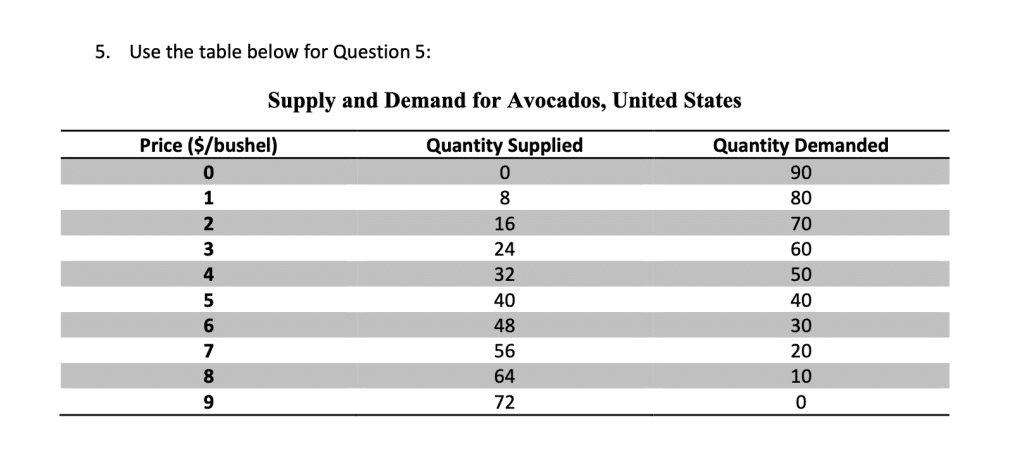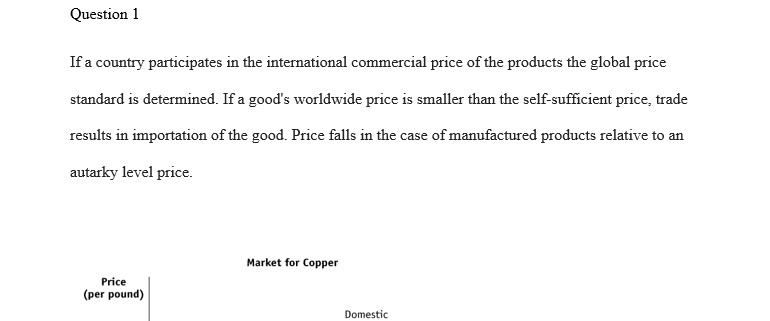When a country engages in international trade, what is expected to happen to the price of imported goods compared to autarky? What is expected
Please answer and explain the following (5) questions in paragraph form. No short answers please.
1.) When a country engages in international trade, what is expected to happen to the price of imported goods compared to autarky? What is expected to happen to the price of exported goods compared to autarky? Use the supply and demand model to explain your answers. You must include fully labeled diagrams for full credit. How can you use different trade theories to explain why a state might engage in international trade? Pick a few theories and apply them in depth.
2.) Give two reasons why a country might impose a tariff on imported goods. Discuss the possible economic and political tradeoffs that nations make when imposing tariffs – who benefits and who loses? What are some political and economic reasons for the widespread use of tariffs despite their overall implications for national welfare? How does the WTO try to overcome these reasons? Why doesn’t the WTO always succeed?
3.) Describe in detail the three accounts in the International Balance of Payments. What is the Balance of Payments equilibrium condition? How can a country reduce its current account deficit? Is a current account deficit always a problem? Why might a country encounter a debt crisis? What factors might contribute to a debt crisis? How does a state try to overcome such a crisis – and how does this impact its politics and economics – explain.
4.) Suppose that the current exchange rate between dollars and Chinese yuan remnimbi is 6.543 CNY/ $.
a.) What is the exchange rate expressed in $ /CNY
b.) Draw a market diagram illustrating how the exchange rate will change if US consumers decide to boycott Chinese products.
c.) Under the boycott in Part b, do you expect the dollar to appreciate or depreciate against the yuan remnimbi?
d.) In the past, how might China have manipulated its currency against the dollar? Why would they do that?Explain how it is difficult for countries like the US to respond to currency manipulation.
5.) View attached table for Question 5:
a.) Draw the supply and demand schedules for avocados in the US.
b.) Give the autarky price and quantity of avocados in the US.
c.) Assume that Mexico can supply avocados to the US for $3/bushel, and the Dominican Republic can supply avocados to the US for $2/bushel. Under free trade, from whom will the US purchase avocados? What will be the quantity of avocados produced in the US, the total quantity purchased, and the volume of imports?
d.) Calculate the increase in consumer surplus under free trade, compared to autarky.
e.) Now suppose that the US levies a $2 per bushel tariff on avocados. Now who does the US buy avocados from? What is the quantity produced, consumed, and imported?
f.) How much revenue will be collected from the tariff?
g.) Calculate the deadweight loss that results from the tariff.
h.) Lastly, think about how a regional trade agreement might impact the trade of avocadoes in the Americas. The US already has free trade agreements with Mexico and the Dominican Republican separately – but what if they wanted to have deeper integration like the EU. What type of regional agreement would you suggest? What are the tradeoffs of each kind? How would you overcome the political issue of JOBS – are RTAs really about job creation?
Text Book:
Carbaugh, Robert J. International Economics 17th edition: Cengage, 2019.

Answer preview for When a country engages in international trade, what is expected to happen to the price of imported goods compared to autarky? What is expected

1102 Words